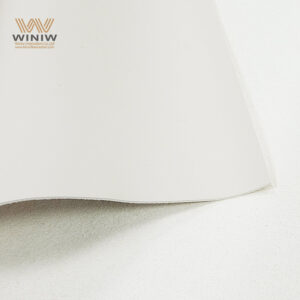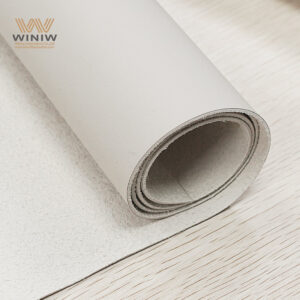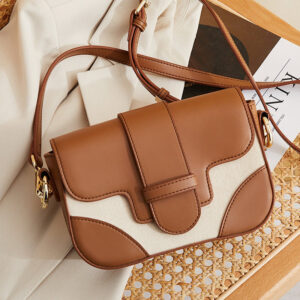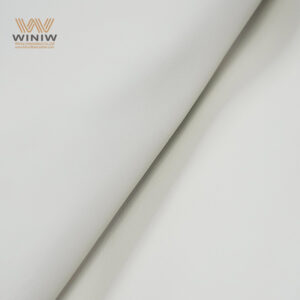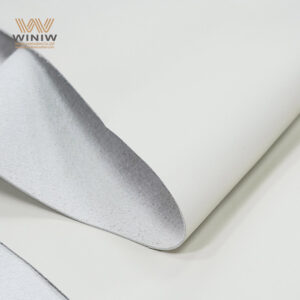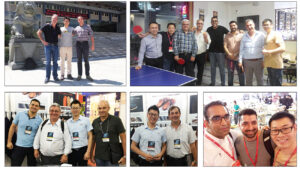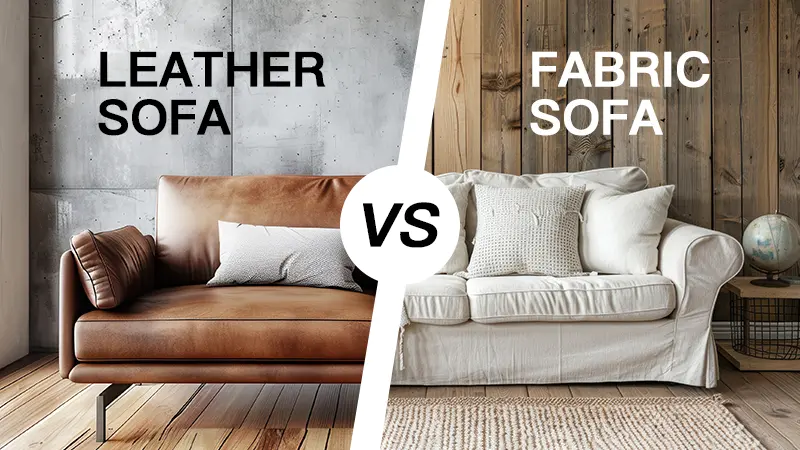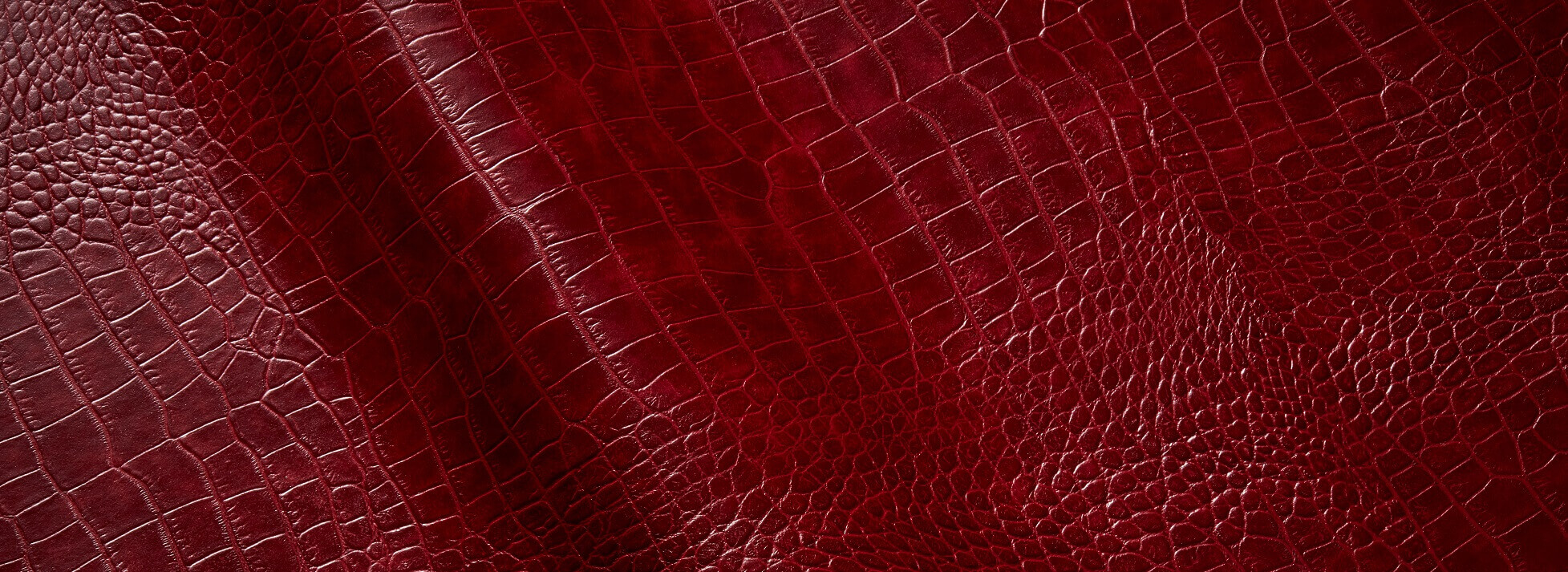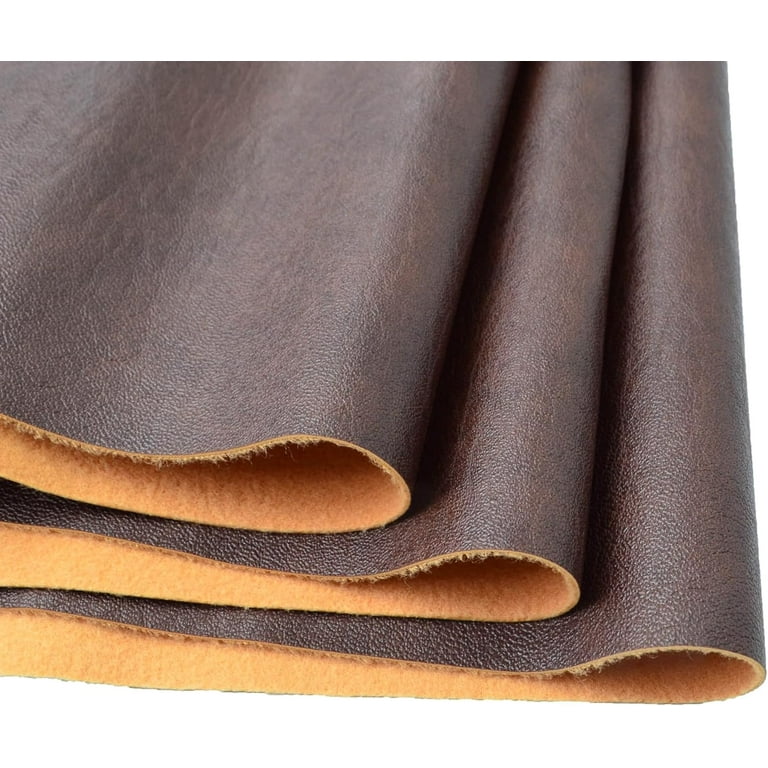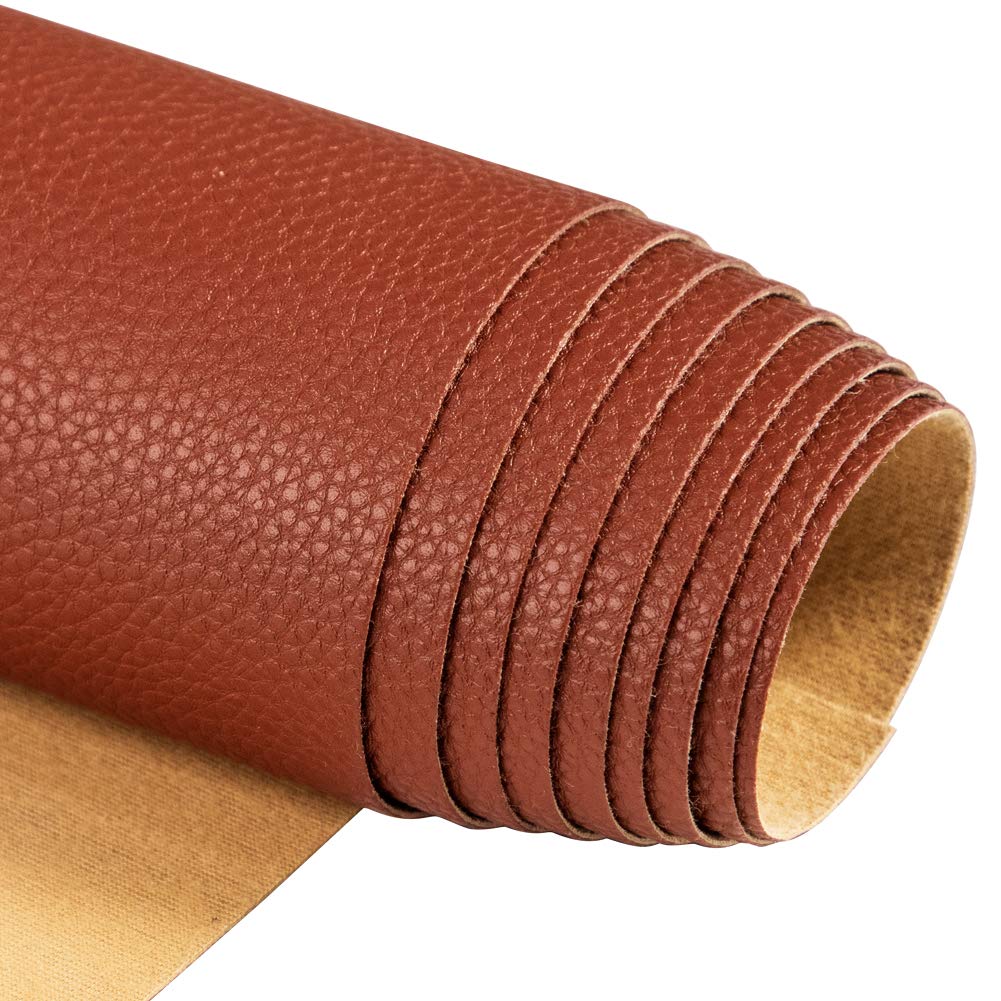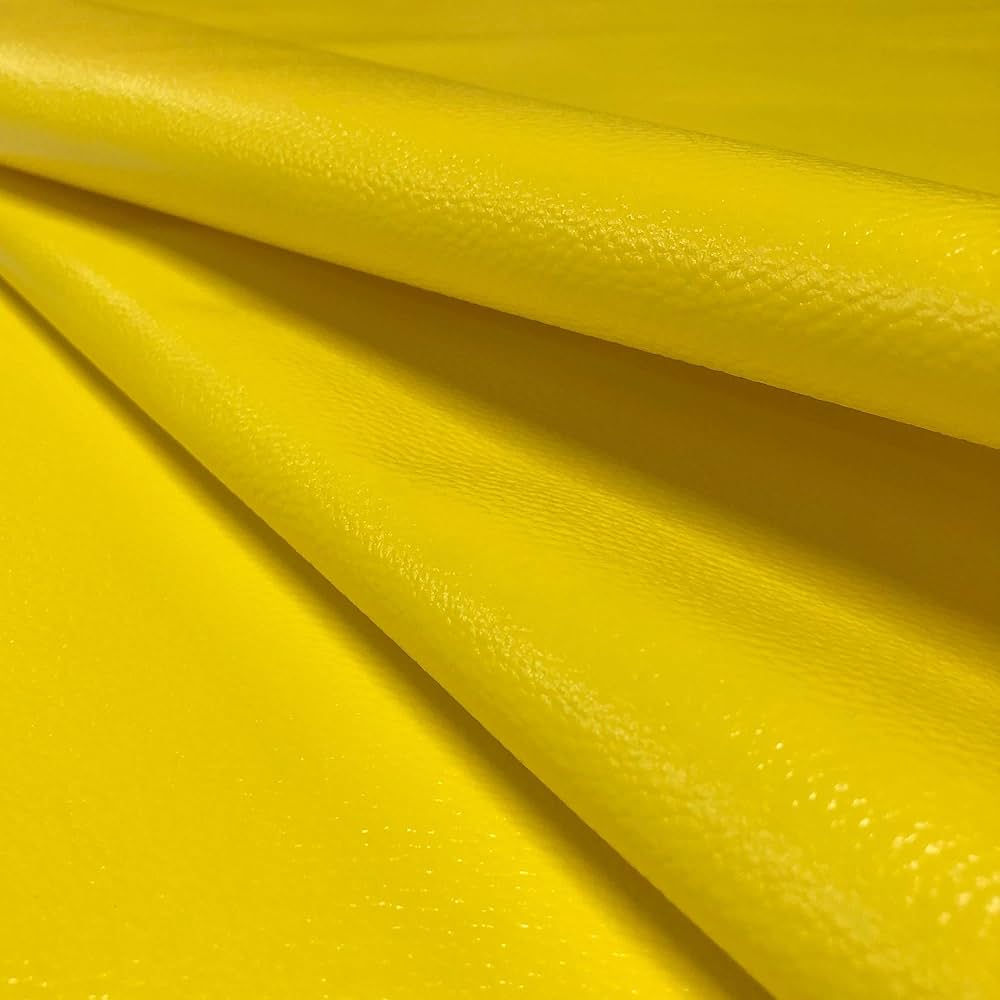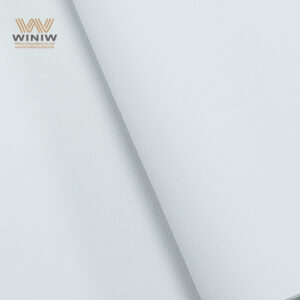
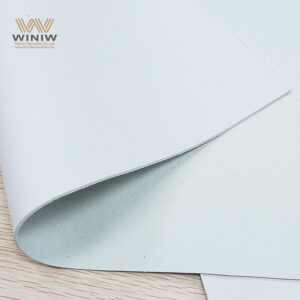
I define vegan leather as a material crafted to imitate the look and feel of animal leather without using any animal-derived components. Over the past decade, I have seen consumer demand for synthetic leather surge, fueled by a growing desire for sustainable and cruelty-free choices. When I explore Vegan Leather Meaning, I notice different markets approach it uniquely:
- North America invests in advanced technologies for commercial uses.
- Europe relies on strict quality standards and government support.
- Asia-Pacific experiences rapid growth, driven by industrialization.
- Latin America develops gradually, adapting to local needs.
- Middle East & Africa finds niche opportunities but faces uneven development.
Key Takeaways
- Vegan leather mimics animal leather without using any animal products, appealing to ethical consumers.
- The material can be made from synthetic polymers or plant-based sources, each with unique properties and environmental impacts.
- Vegan leather is often labeled as искусственная кожа, emphasizing its role as an imitation rather than a direct substitute.
- Plant-based vegan leather options, like cork and mushroom, are more sustainable and biodegradable compared to synthetic varieties.
- The growing demand for vegan leather reflects a shift towards sustainable and cruelty-free choices in fashion and other industries.
- Vegan leather products can be durable and water-resistant, making them suitable for various applications, including fashion and home decor.
- Not all vegan leather is eco-friendly; some synthetic types can contribute to plastic pollution, so it’s important to check product labels.
- Choosing vegan leather supports innovation in materials and encourages responsible consumption practices.
Vegan Leather Meaning
Definition
When I discuss vegan leather meaning, I focus on materials that replicate the appearance and texture of animal leather without using any animal-derived substances. Vegan leather refers to a broad category of alternatives, including both synthetic and plant-based options. Manufacturers design these materials to offer a cruelty-free solution for consumers who want the look of leather but prefer ethical choices. I often see vegan leather labeled as faux leather in retail settings, which highlights its role as an imitation rather than a direct substitute. The vegan leather meaning centers on the absence of animal products and the commitment to ethical production.
Key Features
I identify several key features that define vegan leather meaning in the marketplace:
- Animal-Free Composition: Vegan leather contains no animal-derived ingredients. Producers use synthetic polymers or plant-based fibers.
- Versatile Appearance: I notice vegan leather can mimic various textures, colors, and finishes found in traditional leather goods.
- Sustainable Harvesting: Cork, for example, comes from the bark of cork oak trees. Harvesters remove the bark without harming the tree, allowing it to regenerate naturally.
- Biodegradability: Some vegan leather options, such as cork fabric, are 100% natural and biodegradable. These materials break down over time, reducing environmental impact.
- Cruelty-Free Production: The process avoids animal exploitation, aligning with vegan and ethical consumer values.
- Durability and Functionality: Many vegan leather products offer water resistance and flexibility, making them suitable for fashion, accessories, and upholstery.
Note: Not all vegan leather is biodegradable. Synthetic varieties may contain plastics that persist in the environment.
Purpose
I believe the purpose behind vegan leather meaning extends beyond aesthetics. The main goal is to provide a responsible alternative to traditional leather. Consumers choose vegan leather for several reasons:
| Purpose | Описание |
|---|---|
| Ethical Choice | Avoids animal cruelty and supports veganism |
| Environmental Impact | Reduces reliance on livestock and promotes sustainable practices |
| Innovation | Encourages development of new materials and technologies |
| Accessibility | Offers affordable options for a wider audience |
I see designers and brands using vegan leather to meet the growing demand for sustainable and cruelty-free products. The vegan leather meaning reflects a shift in consumer values, emphasizing responsibility and innovation in material selection.
Term Origin
Etymology
When I examine the term “веганская кожа,” I see that it combines two distinct concepts. “Vegan” refers to a lifestyle that avoids animal products. “Leather” describes a material traditionally made from animal hides. The phrase “vegan leather” emerged as manufacturers sought to describe materials that mimic the look and feel of leather but contain no animal-derived substances. I notice that brands use this term to signal ethical and cruelty-free values. The word “vegan” in this context highlights a commitment to animal welfare and environmental responsibility.
I often encounter alternative names such as “faux leather,” “synthetic leather,” or “leatherette.” These terms emphasize the imitation aspect, but “vegan leather” specifically assures consumers that no animal products are involved. The etymology reflects a shift in consumer priorities. People want transparency about the origins of their products. I believe that the rise of veganism and ethical consumerism has made “vegan leather” a powerful marketing tool.
Evolution
I have watched the meaning of “vegan leather” evolve rapidly in the fashion and manufacturing industries. In the early days, most vegan leather came from synthetic sources like PVC and PU. These materials offered an animal-free alternative but raised concerns about environmental impact. Over time, I saw brands invest in innovative plant-based materials such as cactus, apple, and mushroom leather. This shift responded to growing consumer demand for sustainability.
Today, the market for biodegradable vegan leather is expanding at a compound annual growth rate (CAGR) of 14.6% from 2025 to 2032. I see brands adopting new materials to reduce reliance on animal products. The focus on sustainability is reshaping consumer preferences and driving market growth. Luxury vegan men’s fashion, once a niche, now represents a significant segment in the apparel industry. This change comes from evolving consumer values and technological advancements. The sector is expected to grow significantly through 2033.
- Brands innovate with plant-based materials to meet rising demand for sustainable alternatives.
- Increased awareness of environmental issues prompts companies to improve the quality of biodegradable options.
- Advancements in technology support future growth and enhance product performance.
I believe the evolution of vegan leather reflects a broader movement toward responsible consumption. The term now represents more than just animal-free materials. It signals a commitment to sustainability, innovation, and ethical values. As technology improves, I expect vegan leather to become even more prominent in fashion, automotive, and home goods. The journey from synthetic imitation to advanced plant-based solutions shows how consumer values shape industry trends.
Vegan Leather Materials
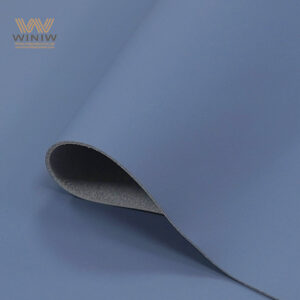
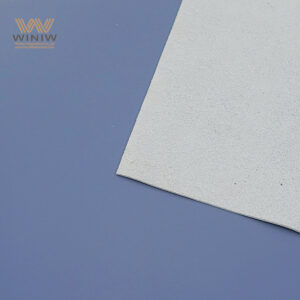
When I evaluate vegan leather, I always start by examining the materials used in its production. The industry relies on a mix of synthetic materials and plant-based alternatives, each with unique properties and environmental impacts.
Synthetics
Synthetic materials play a major role in the vegan leather market. I often see manufacturers use two main types:
PU (Polyurethane)
I find polyurethane to be the most common synthetic material in vegan leather production. PU offers flexibility and a soft texture that closely resembles animal leather. Manufacturers apply PU to fabric backings, creating a durable and water-resistant surface. I notice that PU-based vegan leather is widely used in fashion, accessories, and upholstery. However, PU is a plastic polymer, so it does not biodegrade easily. This raises concerns about long-term environmental impact.
PVC (Polyvinyl Chloride)
Polyvinyl chloride, or PVC, is another synthetic material I encounter in faux leather products. PVC provides a glossy finish and strong resistance to moisture. I see it used in shoes, bags, and automotive interiors. PVC production involves chemicals that can harm the environment if not managed properly. While PVC vegan leather is affordable, I recommend considering its ecological footprint before making a purchase.
Note: Many vegan leather products, especially those made from synthetic materials, use plastic coatings. These coatings can persist in the environment and contribute to microplastic pollution.
Plant-Based
I have watched plant-based alternatives gain popularity as consumers seek sustainable options. These materials come from renewable sources and often offer better biodegradability.
Cactus
Cactus leather uses fibers from the prickly pear cactus. I appreciate its soft feel and natural durability. The harvesting process requires little water, making it an eco-friendly choice.
Apple
Apple leather is made from apple waste left over from juice production. I find it lightweight and flexible, with a smooth finish suitable for fashion items.
Bamboo
Bamboo vegan leather relies on bamboo fibers. I value its strength and rapid renewability. Bamboo grows quickly and requires minimal resources.
Mushroom
Mushroom leather, also called mycelium leather, comes from the root structure of fungi. I see it as a promising material due to its softness and compostable nature.
Cork
Cork vegan leather is produced from the bark of cork oak trees. I admire its unique texture and water resistance. The bark regenerates after harvesting, supporting sustainable practices.
Recycled Options
I notice a growing trend toward recycled vegan leather. Manufacturers repurpose old textiles, plastic bottles, and other waste materials to create new products. This approach reduces landfill waste and supports circular economy principles. I believe recycled options will play a larger role as technology advances.
Tip: When choosing vegan leather, I always check for information about coatings and additives. Even plant-based alternatives may include synthetic coatings that affect biodegradability.
| Material Type | Example Source | Key Benefit |
|---|---|---|
| Synthetic | PU, PVC | Долговечность |
| Plant-Based | Cactus, Apple | Sustainability |
| Recycled | Plastic bottles | Waste reduction |
I see the vegan leather market evolving rapidly. The choice of material affects not only product performance but also environmental impact. I recommend researching the source and composition before making a purchase.
Making Vegan Leather
Synthetic Process
When I examine how manufacturers create vegan leather using synthetic methods, I see a series of precise steps. These steps ensure the final product mimics the appearance and feel of animal leather. I have observed that the process relies on advanced machinery and chemical engineering. Here is how the synthetic process typically unfolds:
- Raw Material Selection: I start by selecting the base materials, usually petroleum-derived polymers like polyurethane (PU) or polyvinyl chloride (PVC).
- Polymer Preparation: I prepare the chosen polymer by melting and mixing it with additives to enhance flexibility and durability.
- Coating Application: I apply the polymer mixture onto a fabric backing, such as polyester or cotton, using rollers or casting machines.
- Embossing and Texturing: I use heated rollers or plates to imprint textures that resemble natural leather grain.
- Coloring and Finishing: I add dyes and surface finishes to achieve the desired color and sheen.
- Cutting and Shaping: I cut the finished sheets into specific sizes for use in fashion, upholstery, or automotive products.
- Quality Inspection: I inspect each batch for consistency, strength, and appearance before approving it for sale.
Note: Synthetic vegan leather production often uses plastic-based resources, which can impact the environment if not managed responsibly.
Plant-Based Process
I find the plant-based process for making vegan leather both innovative and sustainable. Unlike synthetic methods, this approach uses renewable resources and advanced biotechnology. The process begins with sourcing plant fibers, such as pineapple leaves, mushroom mycelium, or apple peels. I then mechanically break down and blend these fibers with natural binders. After blending, I spread the mixture onto molds or rollers to form sheets.
Specialized equipment, including bioreactors and drying chambers, plays a crucial role in this process. I sometimes use fermentation tanks to cultivate fibers, especially when working with mycelium from mushrooms. These technologies help reduce waste and energy consumption. Once the sheets form, I treat them with eco-friendly dyes and finishes. I then cut and finish the material to meet specific requirements. Finally, I inspect the sheets for defects and consistency.
I appreciate that plant-based vegan leather production emphasizes sustainability. The use of renewable inputs and efficient equipment supports a lower environmental footprint. This process aligns with my commitment to responsible manufacturing and ethical material sourcing.
Tip: When I choose vegan leather, I always consider the production method. Plant-based options often offer a more sustainable alternative to traditional synthetics.
Vegan Leather vs Leather
Source
When I compare vegan leather and traditional leather, I always start with their sources. Traditional leather comes from animal hides, usually cows, pigs, or goats. Tanners process these hides through chemical treatments to create a durable material. In contrast, vegan leather uses non-animal sources. Manufacturers rely on synthetic polymers like polyurethane or polyvinyl chloride, or they use plant-based fibers such as cactus, apple, or mushroom. I see some brands use recycled materials, including plastic bottles and old textiles, to make vegan leather more eco-friendly. The difference in source shapes the ethical and environmental profile of each material.
| Материал | Source | Animal Involvement | Eco-Friendly Potential |
|---|---|---|---|
| Traditional | Animal hides | Yes | Низкий |
| Веганская кожа | Plants, synthetics | No | Высокий |
| Recycled Vegan | Waste materials | No | Высокий |
Tip: I always check product labels to confirm the source. Some faux leather products may look similar but use different materials.
Look & Feel
I notice that both vegan leather and traditional leather can achieve a luxurious appearance. Traditional leather has a natural grain and develops a patina over time. It feels supple and warm to the touch. Vegan leather, especially high-quality versions, can closely mimic this look. Manufacturers use embossing and finishing techniques to create textures that resemble animal leather. I find that plant-based vegan leather often has a softer feel and unique patterns, while synthetic options can be stiffer. Faux leather sometimes lacks the depth and richness of genuine leather, but advances in technology have narrowed the gap. I recommend handling samples in person to judge the look and feel for yourself.
- Traditional leather: Natural grain, patina, warmth
- Vegan leather: Custom textures, consistent color, softer or firmer depending on material
Note: Some eco-friendly vegan leather options offer vibrant colors and innovative finishes not found in animal leather.
Долговечность
Durability matters to me when choosing between vegan leather and traditional leather. Genuine leather is known for its strength and ability to age gracefully. It resists tearing and can last for decades with proper care. Vegan leather varies in durability depending on the material. Synthetic vegan leather, such as polyurethane, resists water and stains but may crack or peel over time. Plant-based vegan leather can be less robust but offers a more sustainable profile. I have seen recycled vegan leather improve in quality, though it may not match the longevity of animal leather yet. I always advise considering the intended use. For everyday items, high-quality vegan leather can perform well, but for heirloom pieces, traditional leather remains the benchmark.
| Материал | Долговечность | Maintenance | Longevity |
|---|---|---|---|
| Traditional | Высокий | Regular care | Decades |
| Веганская кожа | Moderate-High | Easy cleaning | Years |
| Plant-Based | Moderate | Gentle care | Varies |
Tip: I recommend storing vegan leather products away from direct sunlight and moisture to extend their lifespan.
Environmental Impact
When I evaluate the environmental impact of vegan leather versus traditional leather, I see clear differences in resource use and pollution. Traditional leather production relies on animal agriculture, which consumes large amounts of water and land. Tanning animal hides requires toxic chemicals, including chromium salts, that can pollute rivers and soil. I have read reports showing that leather tanneries often discharge hazardous waste, affecting local communities and wildlife.
Vegan leather, especially plant-based options, offers a more sustainable profile. Manufacturers use renewable resources like cactus, apple, and mushroom fibers. These materials require less water and energy to produce. I notice that plant-based vegan leather aligns with global efforts to reduce carbon emissions and achieve carbon neutrality.
Plant-based leather offers a sustainable alternative that aligns with global efforts to achieve carbon neutrality, contrasting with traditional leather which relies heavily on water-intensive processes and toxic tanning chemicals.
Synthetic vegan leather, such as polyurethane (PU) and polyvinyl chloride (PVC), presents a different set of challenges. I see that these materials come from fossil fuels and involve plastic coatings. The production process emits greenhouse gases and can contribute to microplastic pollution. When synthetic vegan leather products reach the end of their life, they often persist in landfills for decades. I recommend checking product labels for information about recyclability and biodegradable content.
I created a table to summarize the environmental impact of each material:
| Material Type | Water Usage | Carbon Footprint | Pollution Risk | Biodegradability |
|---|---|---|---|---|
| Traditional Leather | Высокий | Высокий | Toxic chemicals | Низкий |
| Synthetic Vegan | Низкий | Moderate | Microplastics | Низкий |
| Plant-Based Vegan | Низкий | Низкий | Minimal | Moderate-High |
I always consider the full lifecycle of a product before making a recommendation. Traditional leather has a high environmental cost due to livestock farming, water consumption, and chemical waste. Synthetic vegan leather reduces animal impact but introduces plastic waste and pollution. Plant-based vegan leather stands out for its lower carbon footprint and reduced water use.
- Traditional leather: High water and energy use, chemical pollution, low biodegradability.
- Synthetic vegan leather: Lower water use, plastic pollution, microplastics, limited biodegradability.
- Plant-based vegan leather: Minimal water use, renewable resources, better biodegradability.
I encourage consumers to research the source and composition of vegan leather products. Choosing plant-based or recycled options can help reduce environmental harm. I believe that innovation in materials and production methods will continue to improve the sustainability of vegan leather.
Uses
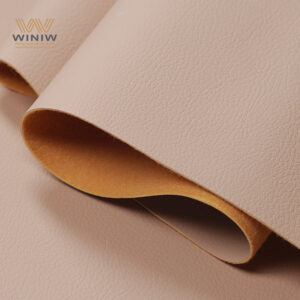
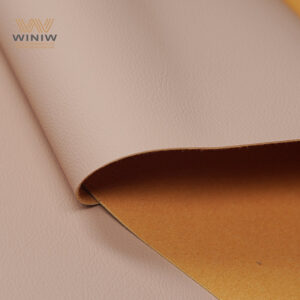
Fashion
I see vegan leather transforming the fashion industry. Designers and brands use it to create stylish products that appeal to consumers seeking cruelty-free and sustainable alternatives. I often find vegan leather in handbags, shoes, jackets, belts, and wallets. These items offer the same visual appeal as animal leather, but they align with ethical values. I notice that alternative leather options allow for a wide range of colors, textures, and finishes, which gives designers creative freedom.
I compiled a table to show the most common applications of vegan leather across different sectors:
| Application Type —| End User Type —| | Bags —| Fashion Industry —| | Footwear —| Automotive Industry —| | Apparel —| Furniture Industry —| | Accessories —| Consumer Goods —| | Home Decor —| Sporting Goods —|
I observe that bags and accessories dominate the market share in fashion. Many luxury brands now feature vegan leather collections, responding to consumer demand for responsible materials. I recommend checking product labels for information about the source and composition, as this helps ensure you choose items that match your values.
Tip: Vegan leather accessories often cost less than traditional leather, making them accessible to a wider audience.
Главная
I see vegan leather gaining popularity in home decor and furniture. Manufacturers use it for sofas, chairs, cushions, and wall coverings. I appreciate its versatility and easy maintenance. Vegan leather resists stains and moisture, which makes it ideal for busy households. I have noticed that plant-based options, such as cork and bamboo, add unique textures and warmth to living spaces.
I often recommend vegan leather upholstery for families with pets or children. The material cleans easily with a damp cloth, and it does not absorb odors like animal leather. I also find that recycled vegan leather supports sustainable living by reducing waste. Home decor brands continue to innovate, offering products that combine style, comfort, and environmental responsibility.
Note: Some vegan leather furniture uses synthetic coatings. I suggest researching the materials to ensure they meet your sustainability goals.
Автомобили
I have watched the automotive industry embrace vegan leather for vehicle interiors. Manufacturers use silicone synthetic leather and microfiber PU leather for seats, dashboards, and door panels. These materials offer durability and easy maintenance, outperforming animal leather in several ways. Silicone synthetic leather withstands extreme temperatures and resists fading, which reduces long-term maintenance costs. I see automakers choosing eco-friendly processes to meet regulatory standards for sustainability and animal welfare.
Microfiber PU leather stands out for its wear resistance and flexibility. I find it ideal for high-traffic areas, such as seats and steering wheels. Its easy-to-clean surface maintains a premium look over time, which appeals to both manufacturers and consumers. The cost-effectiveness and aesthetic appeal of microfiber PU leather position it as a strong competitor to animal leather in automotive applications.
Callout: Vegan leather interiors help automakers reduce their environmental footprint while offering comfort and style.
I believe the growing adoption of vegan leather in fashion, home, and automotive sectors reflects a broader shift toward responsible consumption. As technology advances, I expect alternative leather options to become even more prevalent across industries.
Pros & Cons
Advantages
I see several advantages when I evaluate vegan leather. The most obvious benefit is the absence of animal-derived components. This aligns with ethical values and supports cruelty-free practices. I notice that manufacturers invest heavily in research and development to improve durability and reduce costs. The market for vegan leather grows rapidly as consumers become more aware of sustainability and ethical considerations.
- Vegan leather offers a cruelty-free alternative, appealing to those who avoid animal products.
- Manufacturers create durable and cost-effective options, making vegan leather accessible to a wider audience.
- The shift toward eco-friendly materials encourages innovation and supports lower production costs.
- Plant-based vegan leather uses renewable resources, which can reduce the environmental footprint compared to animal leather.
- I find vegan leather available in a wide range of colors, textures, and finishes, giving designers creative flexibility.
Tip: I recommend checking product labels for information about the source and production methods. This helps ensure you choose the most sustainable option.
I recognize that vegan leather can outperform animal leather in certain applications. For example, it resists stains and moisture, making it ideal for home and automotive uses. The accessibility of vegan leather also means more consumers can afford stylish, ethical products.
Limitations
Despite its advantages, vegan leather presents several limitations. I have learned that not all vegan leather is as eco-friendly as it appears. Many synthetic varieties use plastic polymers, which do not decompose and contribute to landfill waste. This raises concerns about long-term environmental impact.
- Synthetic vegan leather often relies on petroleum-based materials, which can persist in the environment for decades.
- Faux leathers do not decompose, unlike natural materials such as wool or vegetable-tanned leather.
- The ethical debate remains complex. Animal leather is often a byproduct of the meat industry, which complicates the comparison between animal and synthetic alternatives.
- Durability varies. Long-lasting materials are better for the environment, but some vegan leather products may wear out faster than traditional leather.
- Some plant-based vegan leathers require synthetic coatings to improve performance, which can reduce biodegradability.
Note: I always consider the full lifecycle of a product before making a recommendation. Durability and disposal play a critical role in environmental impact.
| Aspect —| Vegan Leather —| Traditional Leather —| | Cost —| Often lower —| Can be higher —| | Accessibility —| Widely available —| Limited by supply —| | Durability —| Varies by material —| Generally high —| | Biodegradability —| Often low —| Higher for natural leather —|
I believe that vegan leather offers meaningful benefits, especially for those who prioritize ethics and innovation. However, I advise consumers to research materials and production methods carefully. The best choice depends on your values, intended use, and commitment to sustainability.
I define vegan leather as an animal-free material designed to mimic traditional leather. The differences between vegan and genuine leather remain clear.
| Feature — | Vegan Leather — | Traditional Leather — |
|---|---|---|
| Durability — | Moderate — | High — |
| Ethics — | Cruelty-free — | Not cruelty-free — |
| Cost — | Lower — | Higher — |
| Appearance — | Diverse — | Classic — |
I always check the source and environmental impact before buying. Many vegan leathers use plastics that do not biodegrade and may pollute. Choosing wisely supports sustainability and avoids misleading marketing.
ЧАСТО ЗАДАВАЕМЫЕ ВОПРОСЫ
What is vegan leather made from?
I see vegan leather made from synthetic polymers like PU and PVC or plant-based sources such as cactus, apple, bamboo, mushroom, and cork. Some brands use recycled materials. Each type offers unique benefits and environmental impacts.
Is vegan leather durable?
I find high-quality vegan leather can last for years. Synthetic options resist water and stains. Plant-based varieties may wear faster. I recommend checking product labels for durability ratings.
Tip: Store vegan leather away from direct sunlight to extend its lifespan.
How do I clean vegan leather?
I clean vegan leather with a damp cloth and mild soap. I avoid harsh chemicals. For stubborn stains, I use gentle circular motions. I always test cleaners on a small area first.
Is vegan leather biodegradable?
I notice most synthetic vegan leathers do not biodegrade. Plant-based options, such as cork or mushroom leather, break down more easily. I check for biodegradable certifications before buying.
| Type | Biodegradable |
|---|---|
| Synthetic | No |
| Plant-Based | Yes/Partial |
Does vegan leather feel like real leather?
I have handled many vegan leathers. Some mimic the texture and softness of animal leather closely. Others feel firmer or smoother. Advances in technology improve the look and feel every year.
Is vegan leather better for the environment?
I believe plant-based vegan leather uses fewer resources and creates less pollution than animal leather. Synthetic vegan leather may contribute to plastic waste. I research the source and production methods for the best choice.
Note: Choosing recycled or plant-based vegan leather supports sustainability.


